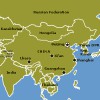Summary
I spent 3 weeks in China, funded through the joint Royal Society of Chemistry / (Chinese) State Administration for Foreign Experts Affairs [RSC-SAFEA] programme. My trip (covering North, South, East and West China) consisted of visits to Guangzhou (where I visited Jinan and Sun Yat-Sen universities), Beijing (Beijing University of Chemical Technology and Tsinghua University), Taiyuan (Shanxi University), Xi’an (Northwestern Polytechnic University) and Nanjing (Nanjing University and Southeast University). I gave invited lectures at two conferences in Beijing and at the universities I visited I gave research seminars and had research talks with existing and potential collaborators. I also discussed undergraduate exchange programmes and answered questions about studying and carrying out research in Birmingham and the UK in general. In addition, during my visit to Beijing, I gave an Understanding Science public lecture and a lecture to high school students (Dulwich College, Beijing).
10-14 November 21013 (Guangzhou)
I arrived in Guangzhou late on the evening of Sunday 10
th November, following a long trip from Birmingham, via Dubai. I was met at the airport by my host Prof. Chun Yuan Liu (Jinan University) and taken to my hotel for a welcome rest.
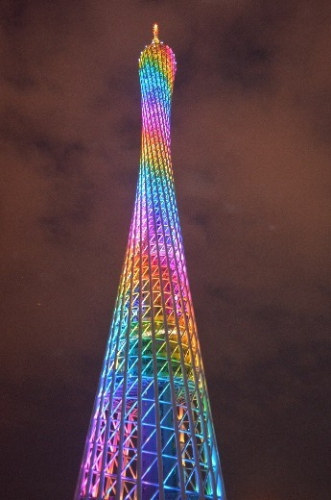
On Monday, I visited Prof. Liu in the Department of Chemistry at Jinan University. In the morning, I presented a research seminar: “Nanoalloys: two metals can be better than one at the nanoscale” to Prof. Liu’s group and some other masters students. In the afternoon, I gave a presentation (followed by a Q&A session) to prospective undergraduates for the Jinan-Birmingham 2+2 programme.
After dinner in a downtown restaurant, I went for a night time boat trip on the Pearl River with some faculty members from JU. There were spectacular views of the lit up city, including the amazing Guangzhou Tower.
On Tuesday morning, I attended a group meeting of Prof. Liu’s students and had discussions on possible future collaborations. After lunch, I crossed the Pearl River and gave a presentation on undergraduate and postgraduate study in Birmingham to a group of third year undergraduates from Sun Yat-Sen University (SYSU).
On Wednesday, I went sight-seeing in Guangzhou, guided by two students from SYSU. Highlights were the Chen Clan Academy and the tomb of the Nanyue King, and the attached museum. Later, back at SYSU, I talked with some prospective students about the SYSU-Birmingham 2+2 programme. After a banquet with my host Prof. Hui Chao and colleagues, I enjoyed another night boat trip on the Pearl River. This time, however, there was quite a lot of rain due to the tail end of Typhoon Haiyan which was passing through southern China.
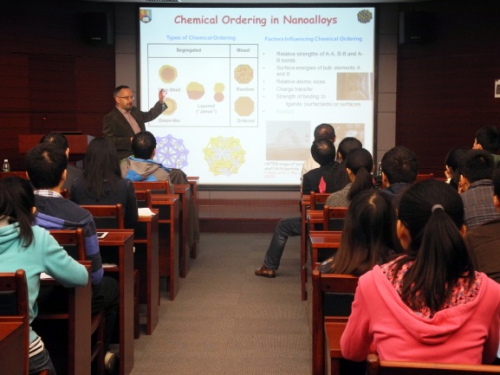
On Thursday morning, I gave a research seminar: “Nanoalloys: Two metals can be better than one at the nanoscale” to the Chemistry department at SYSU. After lunch, I was taken to the airport for a late afternoon flight to Beijing. I was “bumped up” to First Class so I enjoyed a very pleasant 3 hour journey north. I was met at Beijing airport by Xiangguo Qiu a masters student from Beijing University of Chemical Technology and taken to my hotel.
15-22 November (Beijing)
I spent Friday morning at Beijing University of Chemical Technology (BUCT), having research discussions with my host Prof. Daojian Cheng. In the afternoon, I was appointment as an Adjunct Professor at BUCT, at a very nice ceremony, which was followed by my presentation of a research seminar: “Nanoalloys: Two metals can be better than one at the nanoscale”. I later took part in discussions on possible extensions to the 2+2 programme between BUCT and Birmingham.
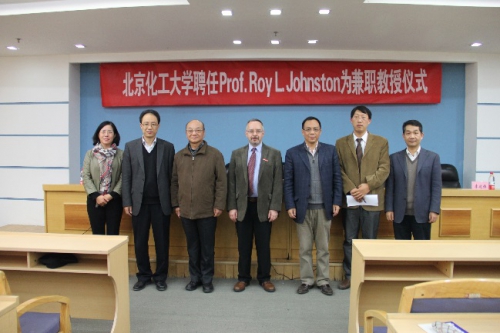
On Saturday, after discussions with some of Prof. Cheng’s research students at BUCT, I went sight-seeing to Beijing’s Olympic Park, guided by Mr Qiu. I was impressed by the iconic “Bird’s Nest” stadium and the “Cube” aquatic centre. The atmosphere was clear, courtesy of a cold wind blowing in from Siberia.
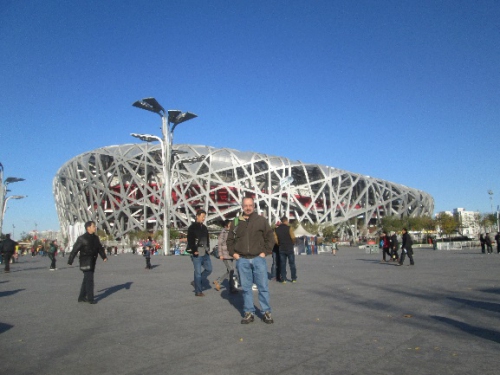
The next day, following further discussions with research students at BUCT, Mr Qui took me sight-seeing in central Beijing, where I visited Tiananmen Square and the Hutongs narrow residential streets close to the Forbidden City).
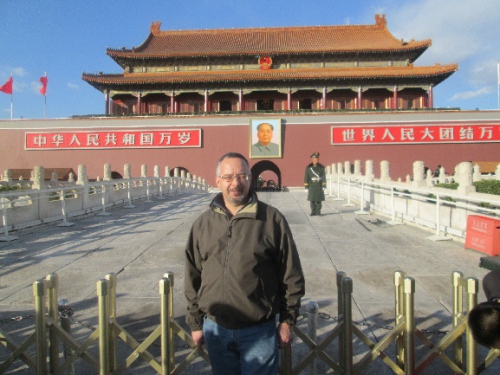
From Monday 18
th to Wednesday 20
th November, I attended the
China-Europe International Workshop on Alloy Nanoparticles (CEIWN2013), which was the original reason for my trip to China. My lecture, “Combining theory and experiment to determine the structures of gas phase metal clusters” was on the Wednesday afternoon.
In addition to the scientific sessions, highlights include the visit on Monday evening to the spectacular “Legend of Kung Fu” show at Beijing’s Red Theatre and the Conference Banquet at the Beijing Quanjude Sanyuanqiao Roast Duck restaurant. In addition to the delicious duck (most parts of which were eaten), we were also presented with small deep fried scorpions – definitely an acquired taste!
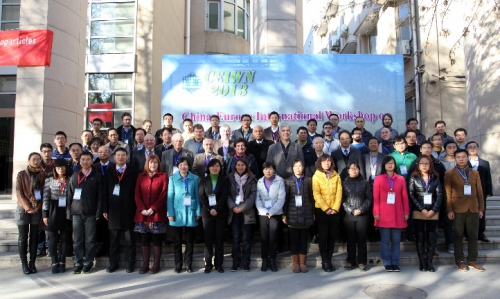
After the conference, on Thursday evening I presented an
Understanding Science Lecture: “Nanoparticles: Small science, big future (?)”, co-organised by the Royal Society of Chemistry and the Institute of Physics as part of the RSC’s Chemistry Week, at the Bridge Café, Wudaokou, Beijing – in the student area close to Tsinghua and Peking Universities. There were around 40 people in the intimate environment of the Bridge Café’s back room and I also met Dr Amy Lam and Dr Wenjun Liu from the RSC’s Beijing office. It was a very enjoyable evening, especially since my host (Prof. David Evans, BUCT, Chair of the RSC Beijing Local Section) is an old friend since we were PhD’s in the same research group at Oxford in the 1980s. To avoid the traffic (which has grown enormously since my first visit to Beijing in 1992), David and I travelled to the venue on the Beijing subway – which was quite an experience in the rush hour!
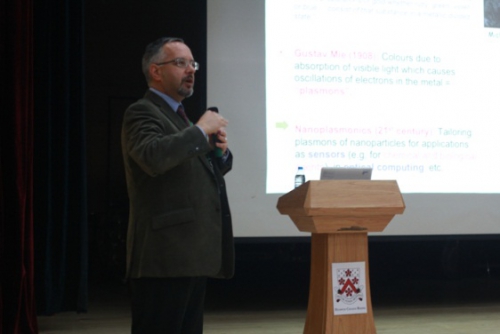
On Friday morning, again in the company of David Evans, I visited Dulwich College (Beijing) and presented the lecture “Nanoparticles: Small science, big future (?)” to around 100 fifteen-eighteen year old students from Dulwich College and Harrow International School. There was a lot of interest from the students and many very insightful questions.
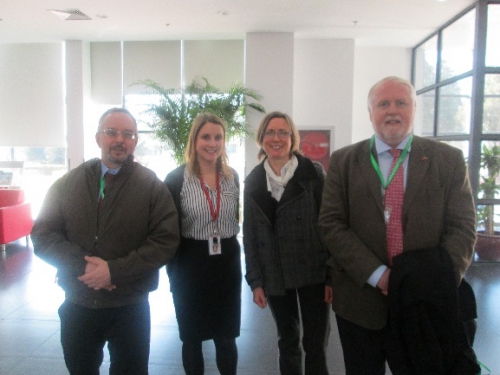
Left to right: RLJ, Kirstie Parker (Dulwich College, Beijing), Dr. Susan Schamp (Harrow International School, Beijing), Prof. David Evans (BUCT).
After a quick taxi ride across Beijing, that afternoon I presented a lecture “Combining theory and experiment to determine the structures of gas phase metal clusters” at the
International Symposium on Cluster Catalysis at Tsinghua University, Beijing.
23-25 November (Taiyuan, Shanxi)
On Saturday morning I took the fast train from Beijing West Station to Taiyuan (Shanxi province). I was met at the station by Prof. Sidian Li, who was a postdoctoral colleague at the University of Sussex in the early 1990s and is now Vice President of Shanxi University. In the afternoon I presented research seminar “Combining theory and experiment to determine the structures of gas phase metal clusters” at Shanxi University. I was presented with a certificate of appointment as an Adjunct Professor at Shanxi University.
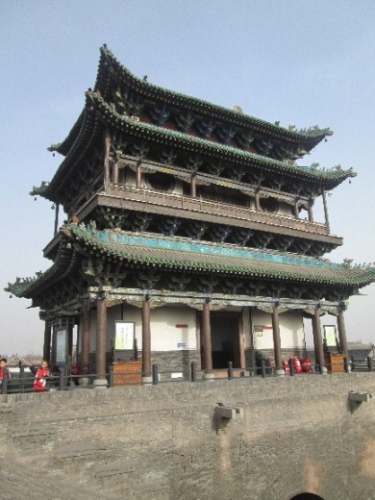
The next morning I was taken by car to the ancient walled city of Pingyao, about 100 km from Taiyuan, which was the centre of banking in China in the 19
th century. In the afternoon, we visited the new Shanxi Museum in Taiyuan, which has an extensive collection of Neolithic and bronze-age artefacts. Shanxi (especially around the bend of the Yellow River) is regarded as the cradle of Chinese civilisation. That evening, dinner was in an excellent small family restaurant.
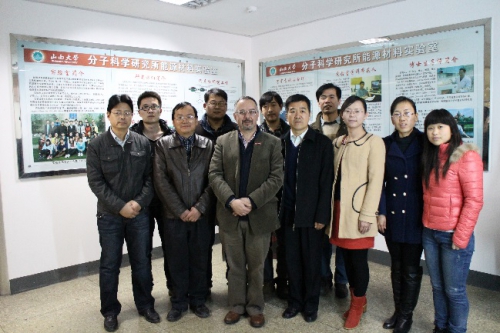
On Monday morning, I had research discussions with Prof. Li and some of his colleagues and students.
RLJ with Prof. Sidian Li (on my left) and colleagues at Shanxi University.
After lunch, I caught a flight to Xi’an, where I was met at airport by a student from Prof. Fuyi Chen’s group at Northwestern Polytechnic University.
26-27 November (Xi’an)
On Tuesday morning I went to see the World famous 2000 year old Terracotta Warriors, near the tomb of Emperor Qin Shi Huang (the first emperor of China) close to Xi’an. I had visited the site in 1992 but since then many more warriors have been uncovered and there is now an extensive museum. In the afternoon I was taken to the Wild Goose Pagoda and Buddhist temple in Xi’an.
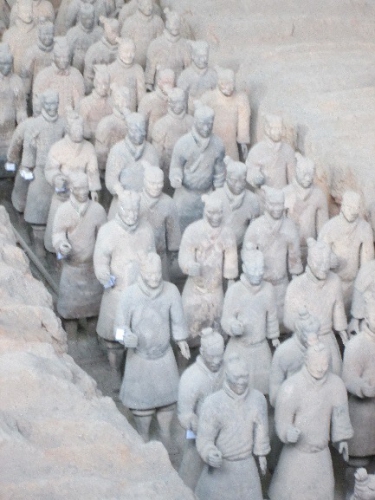
On Wednesday morning, I presented a research seminar “Combining theory and experiment to determine the structures of nanoalloys” at Northwestern Polytechnic University. My host Prof. Fuyi Chen spent 2 years as a postdoctoral researcher in my group at Birmingham from 2005-07.
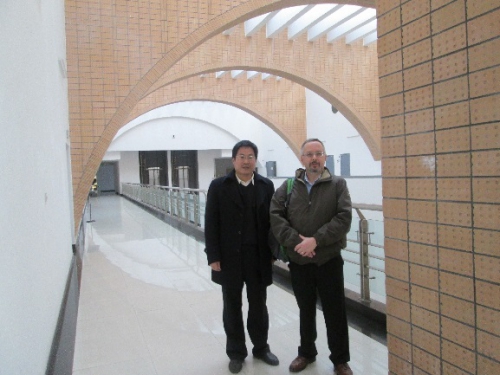
With Prof. Fuyi Chen (NWPU).
In the afternoon, I took a flight to Nanjing. I was met at the airport by two students from Prof. Fengqi Song’s group at Nanjing University.
28-30 November 2013 (Nanjing)
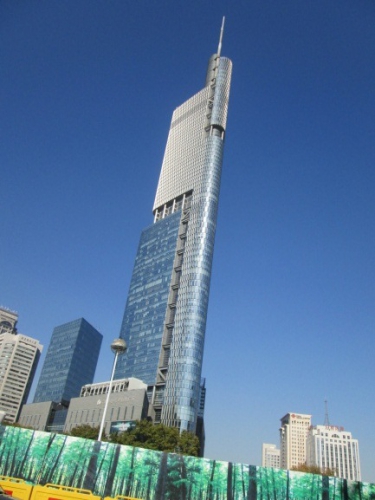
On Thursday morning I presented the research seminar “Combining theory and experiment to determine the structures of gas phase clusters” at Nanjing University. After a quick lunch and car ride across Nanjing, I then gave another seminar “Combining theory and experiment to determine the structures of nanoalloys” at Southeast University.
On Friday morning, I had research discussions with Prof. Song and research students at Nanjing University. The afternoon was spent doing some shopping for Christmas presents to take home and sight-seeing in Nanjing, guided by three students from Nanjing University. We visited Nanjing Museum, the Imperial Examination Schools and a Confucian Temple.
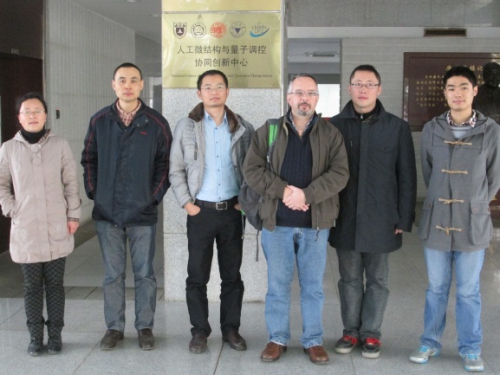
With Prof. Fengqi Song (on my left) and students at Nanjing University.
On Saturday, the last day of my Chinese trip, we travelled by car to the Han dynasty tombs at Yangzhou, about 50 km from Nanjing, across the Yangtse River. In the afternoon I was driven to Nanjing airport for the first leg of my trip home via Guangzhou and Dubai.
Acknowledgments
I am very grateful to the RSC-SAFEA programme for funding my travel to China and some of my additional expenses. Special thanks are due to Dr Kathleen Too and colleagues at the RSC in Cambridge and Prof. David Evans (Chair of the RSC Beijing Local Section). I would also like to thank the University of Birmingham (including Carol Wang in the University of Birmingham Guangzhou Centre) and my hosts at all of the universities that I visited for their very kind and generous hospitality and to the postgraduate students who acted as my guides throughout my visit. The impetus for the visit came from an initial invitation to speak at a conference organised by Prof. Daojian Cheng (Beijing University of Chemical Technology) who was my overall host in China, so I also send him my sincere thanks. Finally, I thank the many undergraduate and postgraduate students who I talked to and who made my visit so interesting.
